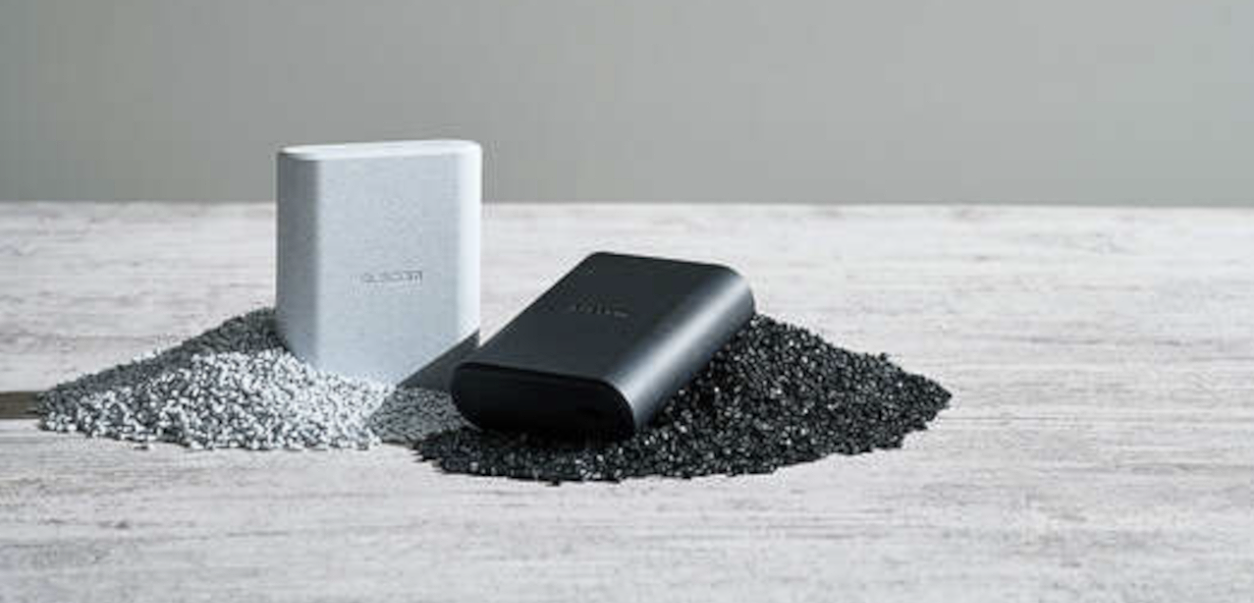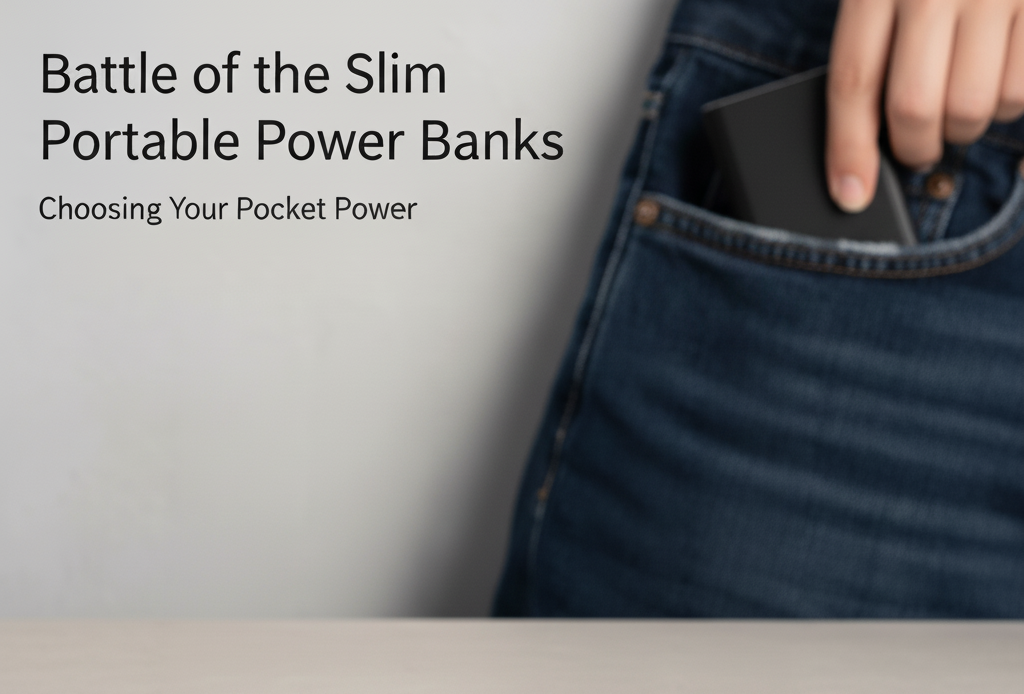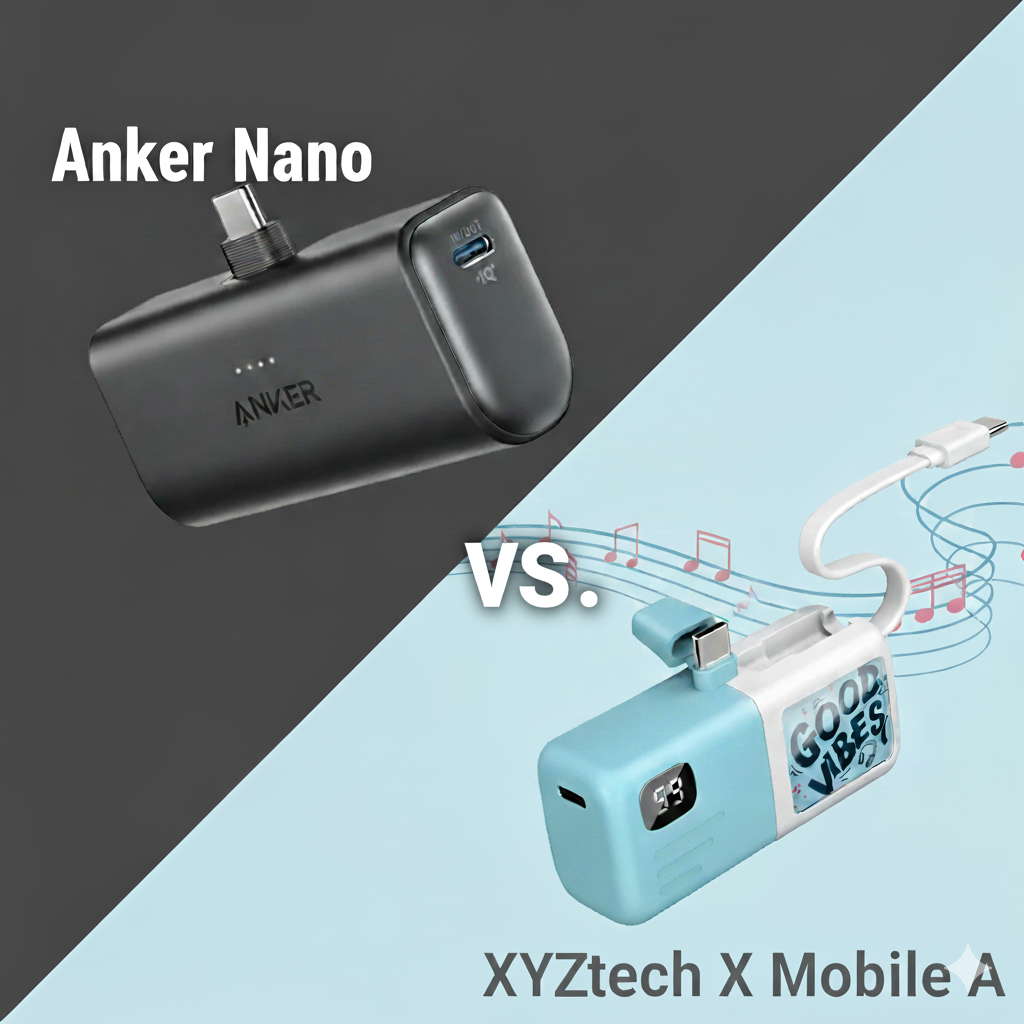Sodium-Ion Power Bank: Can It Replace Lithium? | XYZtech

image via Yanko Design
We have to admit, our lives run on batteries. From smartphones to laptops, we’re all just one low-battery warning away from mild panic. And when we’re on the go, power banks are our trusty sidekicks. But here’s something to think about: most of them use lithium-ion batteries, which, while efficient, raise concerns about sustainability, safety, and cost.
Here comes sodium-ion batteries, the underdog of portable power. Could they be the eco-friendly, wallet-friendly, and (fingers crossed) performance-friendly alternative we’ve been waiting for? Let’s break it down to know whether sodium-ion power bank, an emerging innovation, is ready to take charge.
Why Lithium-Ion Dominates (And Why That’s a Problem)
Before we dive into sodium-ion, let’s appreciate why lithium-ion has been the reigning champ. Lithium-ion batteries have powered the tech revolution—from smartphones to electric vehicles—for good reason. They deliver a solid mix of performance, portability, and reliability.
✔ High Energy Density – Lithium packs a lot of power into a small footprint, making it ideal for slim, high-performance devices.
✔ Long Lifespan – These batteries can endure hundreds—sometimes thousands—of charge cycles with minimal degradation.
✔ Fast Charging – Quick top-ups mean less downtime, which matters in a world glued to screens.
But behind the performance, there are real costs—economic, environmental, and ethical. Here are the growing drawbacks:
❌ Resource-Intensive Mining – Extracting lithium, cobalt, and nickel uses vast amounts of water and energy—often in regions already struggling with scarcity.
❌ Toxic Footprint – Lithium extraction can contaminate soil and water sources, and processing it involves harsh chemicals.
❌ Supply Chain Bottlenecks – Lithium and cobalt reserves are concentrated in a handful of countries. That creates dependency, drives up prices, and fuels geopolitical tension.
❌ Human Rights Concerns – Some cobalt mines, especially in the Democratic Republic of Congo, have been linked to child labor and dangerous working conditions.
❌ Fire Risk – Lithium-ion batteries are highly flammable. Thermal runaway can turn a tiny puncture or overcharge into a full-on fire hazard.
So, What Now?
Think of lithium-ion as the high-performance engine we’ve leaned on for decades. It’s powerful—but expensive to maintain, hard on the planet, and risky when pushed too far. Sodium-ion batteries, on the other hand, are shaping up to be a cleaner, safer, and more sustainable alternative—especially for applications where weight and size aren’t dealbreakers.
Sodium-Ion Batteries: The New Kid on the Block
Sodium-ion (Na-ion) batteries aren’t new—scientists have been refining the tech for decades. However, only recently have they started gaining traction as practical, scalable alternatives to lithium-ion batteries. Thanks to rapid breakthroughs, Na-ion batteries are now being tested in everything from electric vehicles to—yes—power banks.
How Do They Work?
At their core, Na-ion batteries operate a lot like lithium-ion ones: ions shuttle between the anode and cathode during charging and discharging. The key difference is the material—sodium replaces lithium. That one swap changes everything. Sodium is abundant (hello, table salt!) and way easier to source. Here’s why that matters:
✔ Cheaper Raw Materials: Sodium is one of the most abundant elements on Earth—no remote mining operations required.
✔ Lower Environmental Impact: Sodium doesn’t demand the kind of ecologically destructive extraction lithium does.
✔ Safer Chemistry: Sodium-ion batteries are less volatile, reducing risks of thermal runaway (a fancy term for "bursting into flames").
Performance: Can Sodium Compete with Lithium?
Now, the million-dollar question: Can a sodium-ion power bank keep up with your daily charging needs? Here’s a side-by-side look at the current trade-offs:
|
Feature |
Lithium-Ion |
Sodium-Ion |
|---|---|---|
|
Energy Density |
High (~250-300 Wh/kg) |
Lower (~100-160 Wh/kg) |
|
Lifespan |
500-1000 cycles |
500-1000+ cycles (improving!) |
|
Charging Speed |
Fast |
Moderate (but closing the gap) |
|
Cost |
High (materials + demand) |
Lower (abundant materials) |
|
Safety |
Can overheat or combust |
More thermally stable |
The Bottom Line:
Sodium-ion battery technology isn’t just a hype—it’s catching up fast. Researchers have already built prototypes with significantly improved energy density and charge cycles, showing real promise for compact electronics.
The Trade-Off? They’re still heavier and bulkier for the same capacity. But if you care more about cost, sustainability, and safety than squeezing every milliamp into a razor-thin package, sodium-ion power banks are becoming a smart choice—not just an experimental one.
Eco-Conscious Choice: Is Sodium-Ion Really Greener?
If you care about sustainability, sodium-ion batteries make a compelling case. They’re not just a cleaner alternative on paper—they solve some of the biggest environmental and ethical problems tied to lithium-based tech.
1. Cleaner, Less Destructive Mining
- Lithium mining is messy. It drains water tables in already-dry regions like Chile’s Atacama Desert and relies on toxic chemical processes that contaminate local ecosystems. Cobalt, another common lithium-ion component, comes largely from the Democratic Republic of Congo, where child labor and unsafe working conditions remain widespread.
- Sodium, by contrast, is everywhere. It can be harvested from seawater or abundant salt deposits with a fraction of the environmental cost. It doesn’t require deep-earth mining, heavy water use, or rare metals.
2. Simpler, Safer Recycling
- Recycling lithium-ion batteries is possible—but complicated, hazardous, and expensive. Many end up in landfills because the process isn’t cost-effective without subsidies or mandates.
- Sodium-ion batteries use more common, non-toxic materials like iron and manganese, making disassembly and recycling simpler and cheaper. The chemistry is less volatile too, reducing fire risks during handling and transport.
3. Less Geopolitical Baggage
- Lithium and cobalt markets are tightly controlled. A few countries dominate supply, and the race to secure access has led to rising prices, trade disputes, and mounting geopolitical tension.
- Sodium’s abundance spreads across the globe—salt mines, seawater, and mineral deposits in dozens of countries. That means fewer chokepoints, more stable supply chains, and less political drama behind your next charge.
Verdict: Sodium-ion batteries don’t just shift the chemistry—they shift the entire system. From mining and manufacturing to recycling and geopolitics, they offer a far less toxic, more ethical path forward. If reducing your environmental impact matters, this isn’t just a greener option—it’s a smarter one.
Real-World Sodium-Ion Power Bank: Is It Available Yet?
As of 2024, sodium-ion power banks have moved from lab experiments to actual products—though still in early rollout. The tech is maturing fast, and a few players have already launched real, commercially available devices.
Who’s Leading the Charge?
1. HiNa Battery (China): One of the first to deploy sodium-ion battery technology at scale, HiNa released a sodium-ion power bank in early 2024. It’s not ultra-compact, but it delivers 10,000 mAh of capacity with solid reliability and thermal stability. It’s targeted at eco-conscious users and off-grid applications.
2. Faradion (UK): Acquired by Reliance Industries, Faradion is pushing Na-ion tech hard in the EV and grid storage sectors—but their research is also trickling into portable formats.
3. CATL (China): The world’s largest EV battery maker announced its first-generation sodium-ion batteries in late 2023, with second-gen versions expected in 2025. While their focus is primarily on electric scooters and backup storage, power banks are on the roadmap as manufacturing costs drop.
4. Tiamat (France): Focused more on high-power, short-duration use cases, Tiamat is developing Na-ion batteries with fast charge capabilities—perfect for portable tech in the near future.
What to Expect When They Hit the Market:
- Decent Energy for the Size: Current sodium-ion power banks are slightly bulkier than their lithium counterparts but still portable enough for daily use.
- Safe and Stable: Thanks to sodium’s thermal stability, these batteries are far less likely to overheat or combust—a key selling point for travelers.
- Green Cred: No cobalt, no rare lithium, no shady mining—just common materials and cleaner production processes.
- Affordability Over Time: Prices are still higher than mass-market lithium power banks, but once production scales up, sodium-ion has the potential to undercut lithium on cost.
Should You Wait for Sodium-Ion or Stick with Lithium?
Wait for Sodium-Ion if…
- You care more about sustainability than slim form factors. Sodium-ion is the more eco-friendly option—greener materials, cleaner mining, and better end-of-life handling.
- You’re not in a rush. The first wave of sodium-ion power banks is already here, but broader choices with better specs and lower prices are likely within the next 1–2 years. Early adopters will see steady improvements.
Stick with Lithium if…
- You need maximum energy density. Lithium still wins when space and weight are at a premium—great for travel, ultra-compact devices, or high-performance gear.
- You want tech that’s been tested and optimized over years. Lithium-ion is the industry standard for a reason: it’s efficient, available everywhere, and supported by a mature ecosystem of chargers and accessories.
Final Verdict: Is Sodium-Ion the Future?
Short Answer: Yes, but not overnight.
A sodium-ion power bank won’t replace lithium-ion tomorrow, but it is a promising, sustainable alternative that’s improving fast. If you’re eco-conscious and willing to embrace early-adopter tech, keep an eye out—your next power bank might just be powered by salt!
Key Takeaways:
- Greener & Safer – Sodium-ion batteries are more eco-friendly and less prone to overheating than lithium-ion.
- Cheaper in the Long Run – Abundant materials mean lower production costs (and hopefully lower prices for consumers).
- Performance Trade-Offs – Slightly bulkier and lower energy density, but improving rapidly.
- Coming Soon – Early models are emerging, with consumer-friendly options on the horizon.
Would you switch to a sodium-ion power bank?
Frequently Asked Questions
Q: Are sodium-ion power banks compatible with existing devices?
Yes! A sodium-ion power bank delivers electricity in the same standard DC format as a lithium-based one, so it can charge any USB-powered device like smartphones, tablets, earbuds, and cameras. The internal battery chemistry doesn’t affect the compatibility with your gadgets—it just powers the ports behind the scenes.
Q: How long does it take to charge a sodium-ion power bank?
While this varies by model and battery size, sodium-ion batteries are showing promise in terms of faster charge times compared to traditional lithium-ion. Thanks to the higher ion mobility of sodium, some prototypes have demonstrated significantly quicker charging. However, commercially available sodium-ion power banks are still emerging, so actual charge times can vary until standards become more established.
Q: Are sodium-ion power banks heavier than lithium ones?
Generally, yes—for now. Sodium-ion batteries tend to have lower energy density, which means they require a bit more material to store the same amount of energy. This can make sodium-ion power banks slightly bulkier or heavier than their lithium-ion counterparts. But researchers are actively working on improving this with advanced materials and better battery architecture.




